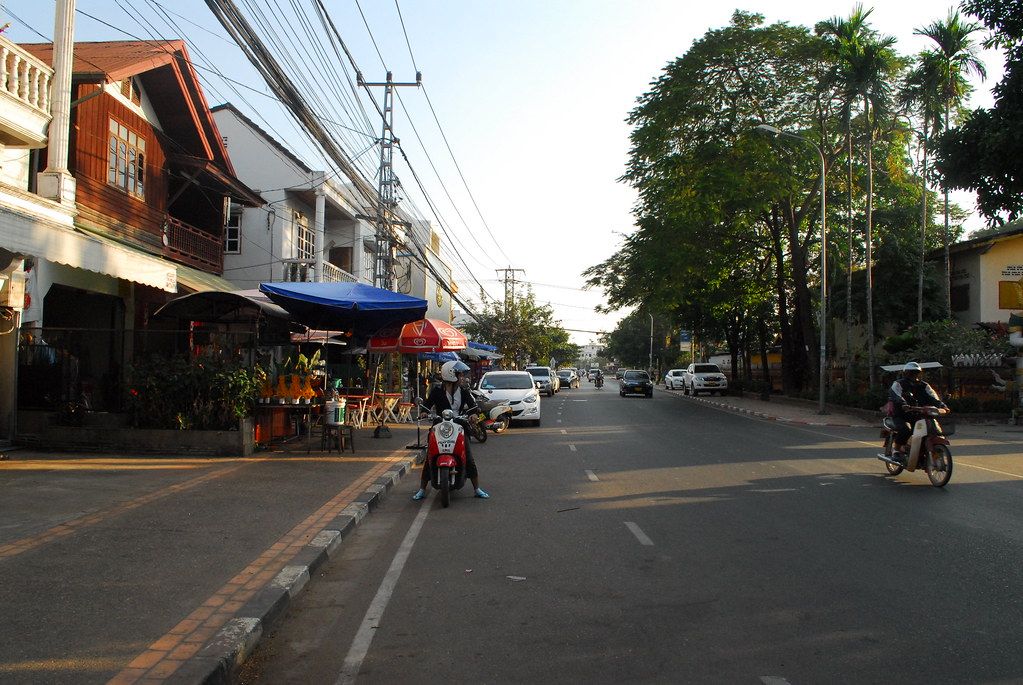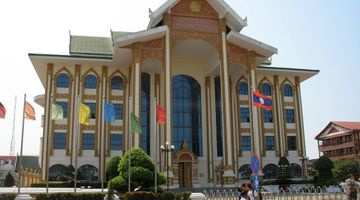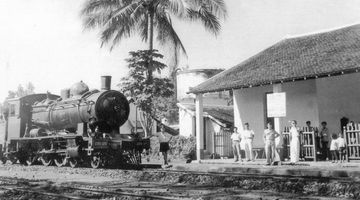Vientiane Travel Guide
In a nutshell
Although it does not get the attention it deserves, Vientiane, the capital of Laos, is one of the richest cultural and touristic destinations in the world.
Why go to Vientiane
Vientiane is simultaneously a highly spiritual city and one in which European influences and unmistakably Asian character create a mixture of gorgeous places and fabulous atmosphere. One of the greatest things about the city is that it is so colourful that it fringes the psychedelic.
Countless temples (wats) shine in the sunlight, numerous merchants are in all corners of the street selling colourful souvenirs and spirituality is so oppressive that you can feel it all around you. Since Laos was a part of the French Colony, this left a huge mark on Vientiane, especially in the architecture and the decorated cafés.
All visitors are surprised to witness the Soviet symbolism that permeates the entire city. Do not be taken aback by the overt communist flags and traditional Soviet elements that can be found in nearly all the restaurants and coffee shops.
On top of all these, Vientiane is the place to go if you’re a wine or coffee enthusiast, as the city has a great number of both wine and coffee shops selling high-quality products at very reasonable prices.
It is a real pity that many foreigners come to Vientiane just to apply for their Thai visa and do not even bother to walk around to experience this great city.
When to go
The best time to visit Vientiane is during the high season which runs approximately from November through February. During this period the day temperatures are at their lowest – well, if you can call +30 ‘low’. Evenings are cool, especially compared with the daytime heat – have a sweater, just in case. Vientiane is quite flat and not a breath of breeze reaches the city so it does feel oppressive most part of the year.
Where to stay in Vientiane
One of the reasons why you can end up staying longer than expected in Vientiane is a great choice of accommodation options at quite reasonable prices. It’s one of those places where you won’t be afraid to read the bill at the end of your stay.
For instance, the luxurious Avilla Phasouk Hotel offers accommodation to tourists for USD50/LAK400.000 per night. Tourists get free parking and free wi-fi. And though in the recent years the prices did increase, you still can find decent value offered by many guesthouses along the Mekong riverfront. For USD15-USD20 you can get a clean room with ensuite bathroom and hot water shower in a winning location.
There are many hotels occupying historical colonial mansions and staying in one of them can definitely add more flavour to your trip. Whatever budget you have, you can rest assured that you’ll always find appropriate accommodation in virtually no time. Therefore, you shouldn’t worry about places to stay in.
Where to eat in Vientiane
Lao, Thai and European flavours intermingle in the Vientiane cuisine. Apart from the delicious street food, Vientiane has a wide variety of restaurants on offer – from simple family affairs found along the riverfront to more elegant venues with palpable French fleur. Street food is cheap, though you can find it slightly more expensive than in Thailand, and family restaurants dish out larb, pat thai or fried rice for about USD2 per plate.
There are many French restaurants, so if you’re not ready to experience something local, you can opt for a more familiar dish. Vientiane offers Mediterranean, Italian, French, Asian, Vietnamese and Japanese food and a wide variety of Mekong fish dishes. You’re all set – there’s something for everybody so you won’t need to starve because you can’t find anything that appeals to you.
How to get around Vientiane
Public transportation in Vientiane exists in the form of tuk-tuks – mainly aimed at tourists – and public buses which are a far cheaper way to move around. You will hardly find a tuk-tuk driver who will agree to give you a lift for less than USD5 wherever in the city you are heading. On the other hand, tuk-tuks are a great way to see the city and feel the local atmosphere.
Public buses charge LAK6,000 per ride but it can be a bit of a quest for a foreigner to figure out the route they need. The most useful one is probably route 14 which travels all way long from the Morning market (Talat Sao), where the bus station is, to the Buddha Park (do not miss it!)
How to get in and from Vientiane
Vientiane has its airport which is located only 3 km northwest of the centre. The Wattay International Airport accepts many regional international flights from Bangkok, Kuala Lumpur, Singapore, Phnom Penh, Hanoi as well as some domestic flights, mainly from Luang Prabang, Savannakhet, Pakse, Oudomsai. Lao Airlines is the leading local carrier.
The most popular way to get to Vientiane is from Thailand. You can fly from Bangkok to Vientiane directly (one hour 15 minutes; THB3,000), but many prefer either to fly from Bangkok to Udon thani in Thailand and then get to Vientiane from Udon Thani (from THB700 one-way) by bus or minibus or to travel all way from Bangkok overland (from THB200). The latter is popular as there are quite comfortable night trains connecting Bangkok to Nong Khai (11 hours, from THB800) from where international buses (THB50) bring you to the capital of Laos in less than an hour, including the time spent at the border.
The most efficient and budget friendly way to travel around Laos is by bus. There is a wide network of routes which link Vientiane to the largest centres in the country. There are vans heading north, to Vang Vieng (3 hours) and Luang Prabang (7 hours) leaving from the in-city bus station near the Morning market (Central bus station).
Buses to Luang Prabang leave from the Northern bus station (10 hours). The same bus station serves transport to Phonsavan (10 hours; for the Plain of Jars).
Pakse (10 hours), Savannakhet (8 hours), Thakhek (5 hours) and other southern destinations within Laos as well as some cities in Vietnam are served from the Southern bus station.
Train is basically not an option for travelling within Laos as the routes are scarce and limited to the shuttle train from Nong Khai in Thailand to Thanaleng – the leg which is easier done by bus.
Is Vientiane safe?
Vientiane is one of the safest touristic destinations you can go to. The crime rate is extremely low, and even the common bag snatching is almost inexistent. The main risk comes from the heat and the fact that health care in Laos is very poor – you will most probably need to be evacuated to Thailand in case of any serious disease or injury.

































